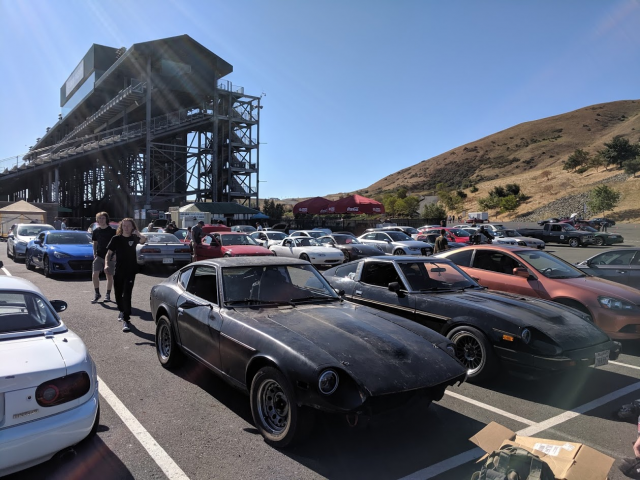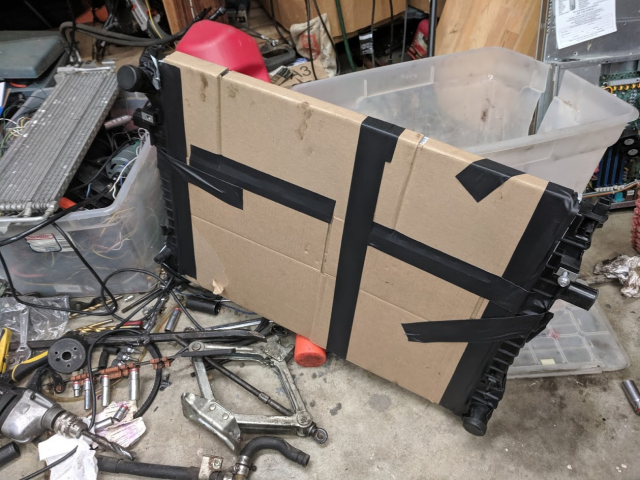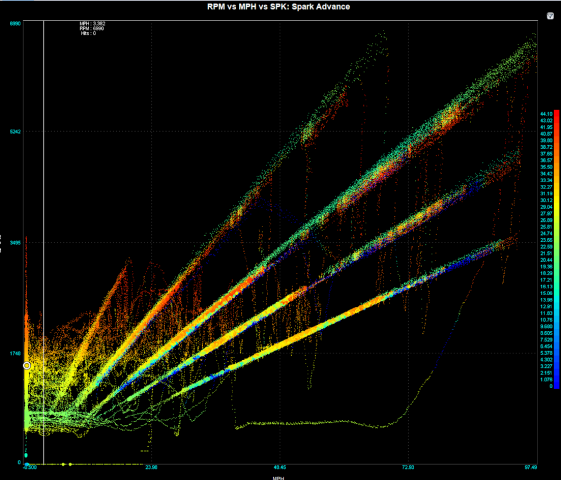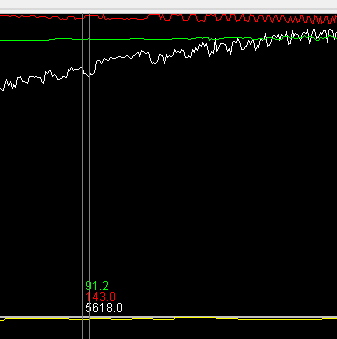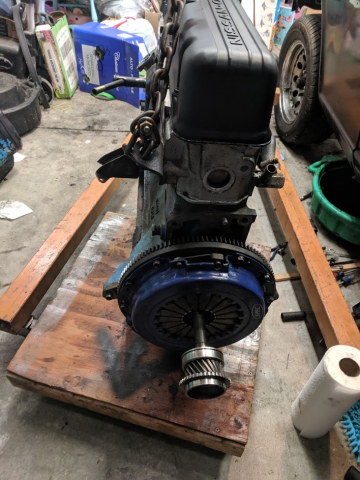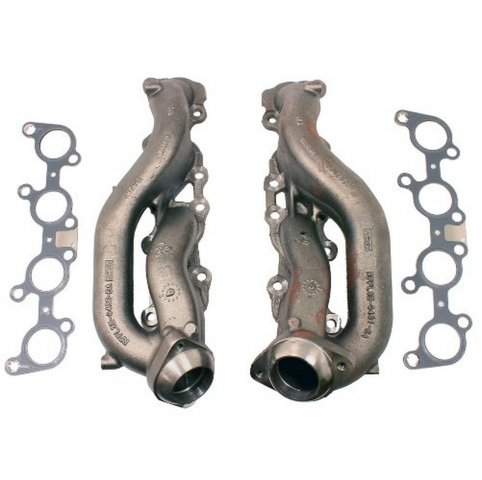-
Posts
3202 -
Joined
-
Last visited
-
Days Won
18
Content Type
Profiles
Forums
Blogs
Events
Gallery
Downloads
Store
Everything posted by Gollum
-
Made a touch of headway on this today. I had some time, and decided to hack away to see how rough this would be with my existing knowledge of awk and the like. Here's my v0.1-0 data transformer: https://github.com/nshobe/megalog It works, at least for my logs. Uploading that to splunk I get 100% proper data ingestion with no post extraction required. And of course all the fields populate automagically: So yeah, just tossed the server instance up today, so no public user access yet. But that's not beyond possible. I'd like to have a proper log file uploader configured first though, so people can send their logs with the proper metadata.
-
Was there ever a 2018 sale? 2019 sale? Future planned sale? I'm interested in window stickers/vinyls, and other merch.
-
I wrote this up for another board, then realized I should repost it here for yall. Just thought I'd share my experience of my first autox, how it went, what I learned, and what I'll do differently or look forward to in the future. Location: Sonoma Raceway. Course was prepped behind main grand stands. There was an on-track event happening at the same time organized by the same club/org, so the main paddock area was used by "the big boys" paying for track time. Format: First off, this was a non-competitive event. Field of about 60 drivers at the beginning of the day, split into two groups. We did two sessions A group drives, B Group works then B Group drives, A group works before lunch. After lunch, we did 4 more sessions, ending the day at 5:10pm. The day started of course with a driver's meeting discussing safety, expectations, safety, cone working, safety, format, and safety. After the safety was safetied we did a course walk and discussed the "safe" line (Sonoma doesn't allow instructing, no talk of "fast" lines!). There was also a second driver's meeting after lunch which I missed as I lost track of time fixing something on my car (more on that later). The groups were staged parked in two rows at an angle. One line would pull out bit by bit, staging for their run, and once through the next side would start lining up. Nobody was counting runs, just keeping the cars rolling as often as safe/possible. Though this wasn't a competitive event, they had timing equipment on hand so you could catch your time as you slowed down after the finish line. Super helpful/awesome. What I brought: I roped a friend with quite a bit more track experience (mostly drift, some Lemons, etc) to be my wing man, and also hold me accountable to make sure I actually attended and didn't pull my motor out for an excuse to not go. So we'd talked ahead of time to make sure we didn't double up too badly on supplies/tools and did our best to support each other. That said, I made a spreadsheet (google docs ftw) so I could track what I needed to pack still, and also for future reference to reflect on. Here's the list: Hat Helmet Sock Tire Pressure Gauge Chalk Folding Chair Water Bottle Sun Block Timing Light Paper Towels Nitrile Gloves Ear Plugs Tape Cardboard Laptop Laptop Charger Power Inverter Multimeter Test Light Long Flat Screwdriver Short Flat Screwdriver Long Philips Screwdriver Short Philips Screwdriver 3/8 Ratchet 3/8 Socket Set 3/8 Extensions Zip Ties 10mm Wrench 12mm Wrench 13mm Wrench 14mm Wrench 17mm Wrench Crecent Wrench That's obviously just my main column, with other columns for quantity, item details, URL if relevent, etc. You'll notice Helmet isn't on this list. That's because my buddy had one he was gifting to me (friends are great!). It was his old one, mildly worn, with a Snell 2010 certification, so hopefully it's still good for a few seasons. It also helps to have a friend who races regularly to give you tips (hat tip to Jesse over at DrivenDaily in New Hampshire). He shot me over his packing list, and while far more extensive he helped note some key items and some basic guidance on what to expect. He was the one to tell me to bring chalk and brought up side wall marking. Results: I was about to get somewhere between 15-20 runs in for the day, which was fantastic. I started my first run just putting around, making sure not to get lost and loafed out a 47 second lap. Feeling a bit more confident I wouldn't get lost, I adding some power the next go around, and ran a 38.something. I then ran a 37, and was notified I missed a gate. Woops. Pay attention! I didn't have an issue getting lost again throughout the day, and took a couple runs to get down into the 33/34 second range, where I sat most of the day. I did manage a 32.064 which I was thrilled about, though my friend was running solid 30/31's all day, so I was still a good bit behind that. Towards the end of the day I got some tips from ride alongs, and was able to see another 2 seconds out there. But I ran out of time to put it all together. That's probably the most frustrating part of the day, to feel like I needed just a few more runs, but the day was over. Working the track was great fun too though, as I was able to see a huge variety of vehicles as well as skill levels involved. From Tesla 3's creaming most of us, to an old 67 Camaro with probably six figures into it that was nothing to laugh at and put down solid times all day. Then on the other end there's a girl attending with her boyfriend, him in a SN95 and her in an 80's nissan hardbody. It was her first event, and I felt like cheering her on every run as I saw her times start at 50+ seconds and whittle their way down to a 38 (and honestly, it was a truck with a mild lift running 28"+ tall wheels, I'm not sure I'd have been any faster in it). It was also healthy to see/watch newer muscle cars span the distance from 28 seconds to 35 seconds, showing just how much of it is driver and confidence in the vehicle. All in all I felt great about my personal results, and while definitely found plenty of aspects to work on, was also encouraged that I'm not incapable of driving decently. The Vehicle: It's at this point I get to start making excuses. So get ready. The vehicle is a '75 280Z. It last weighed in on truck scales at 2280. Tank was probably at about 1/4 at that time. The engine is a L28ET running megasquirt (all built an tuned by me). According to my virtual dyno (which feel free to take with a grain of salt, but I can also give you all my data to back up my known degrees of accuracy) makes about 180 peak HP at about 6,000 but is also making 150hp at 4,300 and carries 160hp to 6500. So it's a nice fat HP curve. The big issue, is the tires. They're "what I've had" sitting on my shelf for.... 9 years? They're Sumitomo HTR 200 (205/60R14). It's a 380TW tire, so not the hardest tire in the world, but their age probably isn't helping. It's also definitely an all season tire, with deep water shedding grooves. And of course they haven't been heat cycled or the like. I know I'd have ran faster times with better tires, but like I stated earlier, I could see piles of time left out on the track. I plan on buying some commuter tires soon, and will be buying 15" wheels with some "fun" tires to wear to the track next spring. What I learned: I need to be more aggressive with the throttle. My idea of "at the edge" apparently isn't at the edge enough. Because I'm still feeling traction limited all the time, I wasn't dipping to 1st in places I should have been. My digital gauge/dash was on the fritz, which made me less weary about pushing the RPM's in first without any form of a shift light, and looking through logs, I rarely reached 5k and even then that was only in 2nd. First was only ever reaching 4,200, so I definitely let piles of room on the table considering I can run to 6800 all day. I also didn't feel like I really had enough time to play with tire pressures with this format. There was hardly enough time to run back to my parking space 200 feet away to grab the tire pressure, let alone check all my tires. By the time I grabbed the chalk and was marking my tires and seeing the results, I realized I could have dropped a lot of air but wasn't sure it even mattered with how much time was being left out there due to me, not the tires. Another big lesson learned, was that my car didn't break. That was the big goal of the day, but it was nice to REALLY thrash on the car and find it holding up. When something has been in the garage for this long, it's hard to feel like you've REALLY checked every bolt... Also, it was 90+ degrees out there, in the shade. I couldn't have brought too much water. I kept refilling from faucets at the track, which was okay, but I wish I'd brought more. It also took me too long in the day to lose my propriety and just dunk my hat and shirt in the sink and wear wet clothing. Once I did that I realized I'd been quite dumb/silly all day. I was much happier being cooler and wet (fun note, we don't have considerable humidity here like most of Texas, so getting wet will quickly drop your skin temps what feels like 10+ degrees since the water evaporates so quickly). Another little driver less-learned was that I need to be willing to chew more wheel with my outside hand when it can prevent a shuffle and allow smoother steering. One main low speed turn kept me puzzled most of the day as I felt I couldn't get my wheel moved fast enough to exit where I wanted. I don't want to think about what stick 225 or 245 tires in the front will be like turning, but I can see that I definitely need to become more economic with my movements if I want to have any arms left at the end of another day like this. Some other lessons learned: A basket somewhere would be a handy, as I need a place to keep things like chalk and the tire pressure gauge IN the car, so I'm not running around grabbing those every-run items. My helmet hits the roof, which means when I get a kirkey or similar seat I'll need to drop my seating position about 3" if I want to pray to be SCCA legal post-cage. This might put my visibility much lower than I'm used to/comfortable with, and will likely run extra padding on the street for this reason. My friend used milk crates for his supplies. I used cardboard boxes (and a backpack)... I was jelly. I need to get better boxes for the stuff/items. An unreliable dash won't ruin your day, but it's quite annoying. Need to solve ECU to Phone communication drop outs. What I'll do different: Go to more events. This was $75, and probably the most fun I've had under $100 in a loooong time. It was a great way to spend a day. I should do it more. I also should try to ride-along more. Several strangers asked if they could join in, and it was great to get other people's feedback, but there is no reason I couldn't have been taking notes on their driving. I also need to be better prepped from a toolbox perspective. I could use something like a metal tackle box for most of what I need for events like this, and could/should probably just spend the money to duplicate the base essentials. What went wrong: Since I mentioned working on the car... I'd been having some standing idle temp control issues with the car, and I thought that maybe my head temp sensor was sitting way above the coolant temp sensor, so I'd pulled the plug I had, and moved the sensor, Well, when I put the plug back I didn't apply more sealant, and of course it leaked. Over lunch we managed to get the plug reinstalled with a couple wraps of electrical tape, and that stopped the slow drip. In fact, now that I think about it, that tape is still on there.... I should fix that.... Anyway, some videos for fun. I don't have any of my car because of a strict hard mount only rule for cameras (safety first!). So here's my friend in his 280ZX: And this was the fastest car I witnessed in the B group (26 second range) while I worked the course. You never know what vehicle will be fast ( a good lesson learned ) but talking to him later this guy was obviously a track rat. Enjoy! Hope you like the book I wrote for yall.
-
@Leon Hit me up on facebook https://www.facebook.com/nathan.shobe.94 I didn't get any email If you get this soon enough, we can meet up for a late lunch/early dinner if you're heading to the track early enough. I work in San Rafael lately and I'm crossing 37, so I can meet up on either side of 37.
-
I was a bit surprised at the number of Teslas present. We ended up working the course at the same spot as a couple in a Tesla. I'd love to turn up Wednesday actually for Wednesday Night Drags, just to put a time down but not sure I can swing that this week. If so I'll have to dig around to see if I still have a number to reach you at. Oh, and that's a nope on the radiator. In the ballpark at least, but no.
-
So the autox event was fantastic. Definitely worth every penny. $75 for the event and I think I got about 15-20 runs in. Pretty cheap seat time. The big win of the day was simply that nothing broke. I had my AAA card on the ready just in case, but the car worked splendidly. I have a slow temp creep but only when sitting at idle. Temps were actually lower after a run than before. Most of the day the pace was just slow enough that I'd shut down while waiting to stage and temps stayed under control. Towards the end of the day as people left early the pace was a little fast for my radiator/fan arrangement so I just took some extra time and let a few people pass through ahead of me. No biggie. And since I'm going to be ripping a bunch of stuff out anyway, why just solve the problem, when you can solve the problem while creating extra work? Extra points for anyone that can guess the donor car for the radiator. Here's a hint, I'm putting the engine in too. It's way too wide at it's widest point, but that's nothing a cut off wheel and a welder can't fix.
-
Ah you're right, I'm sorry. My memory was failing me apparently. The LS2 msq I was mentioning was likely 90, not 10 like I'd said. I'll take a look at your msq and msl later today once I have time. Overall it does appear you have some scatter, but it also doesn't look as extreme as mine was. But definitely the same RPM reading jumps during WOT, You can see an obvious "high vs low" pattern and can almost draw two different curves across the low ports and high points. And engine doesn't rev perfectly smooth in WOT, but it also doesn't JUMP 500+rpm across one or two data polls in sub 15millisenconds.... I was 60 for my lag factor for a while, and was up at 90 when I blew my headgasket a few months ago. I'll be starting down at 30 and I'll see if I can raise it from there.
-
You can likely DOUBLE the airflow through the radiator over stock if you just properly seal up the radiator to the core support and remove other paths for air to flow. That said, any real advice I have is based upon what conditions you think you'll be having cooling issues. Obviously when idling and cruising around out of boost there shouldn't be any considerable heat load over a non-turbo LS, or hell, even a L28. Where you'll run into more difficult situations is cooling down between 1/4 mile pulls depending on how much air you can get through the radiator via fans, and extended time under boost on a track. The former situation is all about getting heat and air out of the bay and hood vents work wonders here. In the latter case the problem is almost certainly pressure differential related. You have too much pressure behind the radiator in relation to the front. Adding a shroud in front to ensure air can't escape without going through will raise the pressure in front of the radiator. Adding fender-well ducting to allow engine bay air to escape out the sides will lower the engine bay pressure, inreasing flow through the radiator. You'll generally see a combination of modifications done to improve both sides of the equation on dedicated track cars because lap after lap can really start to pile on the load. If your radiator isn't keeping it, it'll be obvious. That said, look at how "small" some radiators are, like a factory C7 radiator. Sure, it's not turbocharged like you, but those will run all day at the track with a radiator smaller than the factory Nissan unit. Just has way better airflow to start with.
-
Feel free to send some logs my way to look at. I don't profess to be any smarter than other tuners, but sometimes someone will catch what others miss. Do you have any VSS or MPH logging? If so, then take a long spirited drive making sure to row through the RPM range in several gears. Then pull up the log in MLV and make a scatter plot of MPH on the X axis and RPM on the Y axis. I use spark advanced as my color axis, but doesn't really matter. Here's what my super sloppy dizzy wheel looked like: Notice the huge vertical distance traversed in RPM for a given MPH. What's more surprising, is when I select one of those entities, and then move forward and back through the adjacent log entries, it might be going from top to bottom of the spread during a WOT pull. That's a HUGE deviation and the motor itself is utterly incapable of undulating that much when in gear on the road. The only place that can come from is variances in the readings from the trigger wheel. Here's another way to look at the same "noise". Look at my RPM reading during a WOT pull: SOME variations are expected, and I thought maybe I just needed to turn the lag up on the sensor reading. Then I found some tune files and logs belonging to a LS2, which has a factory crank mounted sensor. The WOT pull was smooth as glass, and lag was turned way down to 10 in his tune.... That RPM signal noise isn't power variance from bad fueling or loss off trigger signal. It's simply slop in the trigger drive leading to bad commanded timing, which just ends up fighting the input to the problem. No amount of having stronger ignition will fix that what the ECU "thinks" is the correct commanded timing might be wrong. Way wrong. If you dig around you'll find that some people work really hard to remove slop from the system, and they likely fair a lot better than I did. But I say, sensors are cheaper than ever. Just get something crank or flywheel based and call it done.
-
Got the engine in Tuesday. Likely won't get it fired up tonight, so next Tuesday is the most likely time I'll get to play around on it some more. If all goes well, I'll be driving it next weekend checking the tune on this motor combo (different head/cam/compression).
-
New motor arrived (thanks stupid_fast!) along with a baller clutch alignment tool. 😀 Will try my best to get the motor buttoned up and back in the car by Thursday. Going camping for the long weekend, and will then have next week and weekend to get her fired up and rolling around again.
-
I need to coat my garage floor. Sadly that'd be more than a weekend's job to get everything out/off the floor. Guess I'll just have to buy a second house....
-
Example of shorty headers that might work. Designed exactly for this kind of problem with tight fitting swaps. https://www.speedwaymotors.com/Patriot-Exhaust-H8483-Tight-Tuck-Header-Ford-5-0-Coyote-Raw,301578.html
-
With the power being generated by turbo Coyote builds it's hard to imagine getting that to the ground in a S30. I guess for a drag car, but anything else would be a serious challenge. Giant bias ply's would certainly be on order. I've seen a few shorties that turn down more than back, so there's certainly some options out there. If you run the alternator up front without PS or AC there's no reason you can't run a minimal depth pan to get the motor so low and far back that the only thing in the way is "frame" and firewall. The more I measure the more I see that the steering and strut towers shouldn't never be an issue with this motor. It really just getting the exhaust turned down without hitting the firewall or rails.
-
And how many built engines did Jeff go through before finally deciding to tune on a junkyard oem combo? And then he ended up making more power on that motor than most, go figure. My point is that even forged pistons aren't going to give you enough forgiveness to "learn to tune" on. Don't waste money when you don't have to. If this were still the year 2002 I'd say there's absolutely no reason to go forged pistons for me and my use case. But with today's supply of L engines, you have a bit of a point. But at what cost? At minimum I'd end up with: $500-700 in machine work minimum to get the block sonic tested, bored, decked, coolant ports opened, and studs upsized. $1,000 for forged pistons, though maybe you know of a deal I don't for a nice piston that fits the factory rods $100-200 in all the rebuild odds and ends $700-800 for a proper damper and trigger wheel (which is half of my detonation problem, thus needs to be done) If I'm doing all that, I might as well tack on: $250 head machine work to clean the deck and open the valve seat for larger valves $500 for larger valves My time and energy to clean up the valve seat backside radius, bowl, and port cheeks. $500 Camshaft $200 valve springs $150 New rockers $100 Lash pads And probably other things I'm forgetting. In all reality, investing ANY parts into an L engine starts to make you ask "where to stop" because rebuilding a motor to only do a basic bore cleanup by a machinist and slapping in forged pistons doesn't sound like a wise investment. You either go all the way, or not at all. I was a huge fan of the "not at all" approach. The issue is the supplies as of late.
-
No reason to go forged pistons unless you're just trying to save weight. The factory pistons break because of detonation, not power generated. Forged pistons can give you a bit more wiggle room in that they'll take the abuse of mild detonation, but that abuse is just transferred to everything else. The real answer is to tune it to not detonate, which is also why I went with a gasket I knew would blow easily. If the tune is solid, there's no reason you can't make 400+whp on a factory long block. You'll have heat issues trying to hold that power for long intervals, but for drag racing it should hold up fine. I'd say anything above 350whp will have heat management issues on a road course and you should be doing the same things Jeff is doing to his block and head to improve coolant flow. But even then, forged pistons are still not needed. If you're building a 200+whp NA build though, you'll want lightweight pistons, which means go with something for weight reasons, not strength/power reasons. That said, I've had to do much soul searching. I'm extremely unbiased and love to see any swap into a S30. I wanted the L28ET because it would supply enough power for my goals and is economical compared to any swap. The problem is my opinion on that matter has aged. I've been on these forums and into Z cars for 16+ years now. The market has changed. I can't just go find another L28 core all day long in the junkyards. I can't find turbo donors for under $1,000 regularly. If I'm going to be racing regularly (autox for now, hpde in the future) I don't want to be worried about the issues with anytime I have motor issues. I need a mill that isn't just dependable, but expendable. That second factor is really where the L engine is lacking. So I'm putting in a spare L28ET for now, but there's a good chance it's coming out come winter with something else going in. In the same vein, any suspension mods I'll be doing will also be as "off the shelf" as possible. There often over looked value of being able to get bushings, bearings, bolts, etc at your nearest parts store and not wait for something to show up online. If you look at parts used for circle track this is very much the way everyone builds their cars. You fabricate the chassis around common parts, not the other way around. I'm not interested in making or buying custom parts because they fit my chassis. I'm interested in making my vehicle fixable/repairable when things go wrong. And there's always something that'll be going wrong.
-
For reference: I can't find any pictures of them installed though. It mildly concerns me that they angle at the end, which means they're pointing at the transmissions potentially a bit much, but they also seem to terminate right at the end of the motor, so that's probably pretty good. That'll put the flange in a place that there should be space for them.
-
So I have a spare motor on it's way over to me thanks to stupid_fast who's really coming through for me. In the meantime, nodus is scheeming and causing all sorts of trouble (the good kind). He has a project that's likely getting parted out, so there's a motor there that will likely end up at my house. More to come later.
-
For completely unrelated reasons... I was doing research... Ford now makes part number M-9430-SR50A which are block hugging cast manifolds that should be ideal for tight engine bays, with minimal sacrifice in power. I can't find dynos, but I'm willing to bet it's no major restriction. So unless I missed it, we're stilling waiting on our first Coyote swap? Looks easier and cheaper every year....
-
FWIW these are the ones I bought and I've been really happy with them. Might not be everyone's cup of tea in the looks department but I'm not exactly a purist in much of any way. https://www.amazon.com/gp/product/B07FS617J8 Didn't use the supplied wiring for the most part, was total crap.
-
As some know, I blew a mechanical fuse (headgasket) tuning which didn't bother me too much. But after several conversations I realized that I should probably do a thorough clean out of the coolant system, as there was likely good amounts of scale in the block and likely didn't help detonation problems. So I went ahead and pulled the motor and cleaned it out, put in new (steel) core plugs. I also wanted to replace my oil pan gasket while I had it out because I knew it was at least one of my main leaks. I was cleaning the pan out, and found: Yup, those are piston skirts... How long have they been in there? Who knows. Could have been like that when I bought the car for all I know. Do they even belong to an installed piston? Yup. #5. Was that the cylinder that blew the gasket? Nope. That was between 3 and 4. All this while I'm trying to get ready for an AutoX event in just under a month. Luckily it sounds like @stupid_fast will be hauling a motor over for my use in the meantime. I'll owe him big time. Then I need to figure out what I'll do about this motor. I'll need to call around and see what machine shop I should use and what it'll cost to get it cleaned, decked, and matched to a new set of pistons. I really don't want to spend $3k building a motor, but I also don't want to throw away money on something that won't be reliable for my goals (which are relatively mild). On the plus side, maybe I should be putting in an order with JeffP for a head gasket and doing his block modifications while I'm at it. Then there's STILL the chance I might take the block to a shop, just to find out it's not a candidate for keeping due to wall thickness. I know Jeff went through several blocks before finding a "good one". These are times that it's dangerous to have my lack of purity. F22C's start looking cheap. Or VQ's... Or LSx's....
-
Zcardude, I'd say there's a chance that a 3.5" downpipe might only net you 20 peak HP, but the benefits will be much, MUCH more important in all the other ways. You'll likely pick up a good amount of spool time, and by dropping the pressure ratio you're also likely to end up in a better spot of the compressor map which means you might drop a few degrees of inlet temp for a given scenario. You might pick up 30-40 like you say, and that'd be great. I'm just saying that I'd be more focused/concerns about the transient improvements. You're already getting pretty great numbers out of that turbo. Equally important of a mod would be to ditch the 280ZX Dizzy for "crank" signal. Put a sensor on the crank. You might find yourself able to run more timing as well as the dyno showing smoother power delivery. You're on a smoothing factory of 5 on a dynojet, and it's still showing lots of roughness. Imagine what it looks like with zero smoothing... I'd be willing to bet a huge part of that is trigger slop/scatter. Get that solved and suddenly the engine state will be smoother which helps ALL tuning aspects.
-

simplicity and reliability, ZX turbo track toy
Gollum replied to stupid_fast's topic in S130 Series - 280ZX
Leon, I think stupid_fast will also be at the autox at sonoma September 14th... You should come out. Fuel filter issue or not. -
Something tells me you've been busy out enjoying the relatively mild summer we've had versus spending time in the new garage... I don't blame you. :-) That said, I signed up for an autox at Sonoma for September 14th in order to give me a kick in the butt to sort my car out. Would be cool to see you at a cars and coffee with the Velo Rossa sometime.



